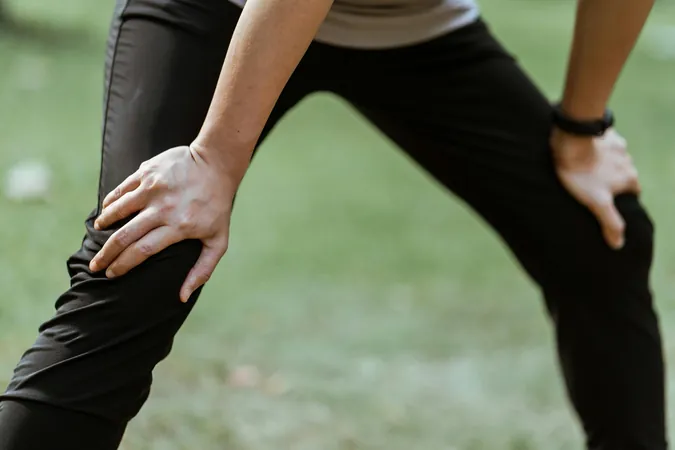
Revolutionary AI Transforms Knee Surgery with Tailored 'Functionally Aligned' Approach
2025-04-01
Author: Sarah
Introduction
In a groundbreaking development for orthopedic surgery, patients with naturally curved legs have shown remarkable improvement thanks to an innovative method of knee-replacement surgery that leverages artificial intelligence (AI) to achieve optimal component alignment for individual bodies.
The Study
Recent research has compared the traditional knee-replacement surgery to a novel 'functionally aligned' approach, specifically designed for patients with bowed legs. Associate Professor Simon Young, from Waipapa Taumata Rau at the University of Auckland, leads this study, which has already garnered attention in the Journal of Arthroplasty. As an orthopedic surgeon at Health New Zealand Te Whatu Ora Waitematā, Young has been at the forefront of integrating robotic technology into surgical practices since 2017, resulting in increased precision during procedures.
Addressing Shortcomings
Traditionally, conventional knee-replacement surgery is not without its shortcomings, with nearly 20% of patients expressing dissatisfaction with their results. One significant factor contributing to this dissatisfaction is the natural curvature of patients' legs. Many people may have knees that do not align perfectly straight, yet conventional surgeries typically place the new knee components in a straight position, which can lead to complications later on.
AI in Surgery
Recognizing this challenge, Young utilized a surgical robot coupled with AI to analyze comprehensive imaging data of each patient's knee. The technology compares this data against thousands of potential alignment configurations to identify the most compatible option for each individual. "We developed an artificial intelligence algorithm that assists surgeons in positioning knee components in a manner that aligns more naturally with the patient’s anatomy," explains Young.
Significance of the Research
With approximately 30% of the population experiencing bowed legs, whether from natural genetic factors or conditions like arthritis, the implications of this research are substantial. Young notes, "Many athletes may have bowed legs—if they develop arthritis later in life and receive a knee replacement that assumes a straight alignment, it’s placed in a position it has never occupied before."
Enhanced Surgical Process
The AI software enhances the surgical process by accounting for individual knee alignment and soft tissue characteristics, allowing surgeons to evaluate and simulate various placement options digitally. This advanced modeling analyzes between 20,000 to 25,000 potential positions and ranks them according to what would provide the best outcome for the patient.
Study Results
In a study involving 244 knee-replacement patients over two years, researchers followed participants who were randomly assigned to either traditional surgery or the AI-assisted approach. While both groups experienced positive outcomes, patients with pronounced bowing in their legs particularly benefited from the functionally aligned knees.
Future Directions
Based on these promising results, Young encourages orthopedic surgeons to consider the natural shape of a patient's legs in their surgical planning. To further support this pioneering work, he has developed a specialized app for orthopedic surgeons in New Zealand, Australia, and Asia to facilitate functional alignment strategies.
Conclusion
Ongoing research aims to refine this AI tool and broaden its application to ensure optimal outcomes for every patient seeking knee replacement surgery. The advent of this technology could revolutionize how knee surgeries are performed, leading to greater satisfaction and improved recovery for many individuals.
Stay tuned as developments in this field continue to unfold, turning the tide in orthopedic surgical techniques and potentially transforming the lives of countless patients.




 Brasil (PT)
Brasil (PT)
 Canada (EN)
Canada (EN)
 Chile (ES)
Chile (ES)
 Česko (CS)
Česko (CS)
 대한민국 (KO)
대한민국 (KO)
 España (ES)
España (ES)
 France (FR)
France (FR)
 Hong Kong (EN)
Hong Kong (EN)
 Italia (IT)
Italia (IT)
 日本 (JA)
日本 (JA)
 Magyarország (HU)
Magyarország (HU)
 Norge (NO)
Norge (NO)
 Polska (PL)
Polska (PL)
 Schweiz (DE)
Schweiz (DE)
 Singapore (EN)
Singapore (EN)
 Sverige (SV)
Sverige (SV)
 Suomi (FI)
Suomi (FI)
 Türkiye (TR)
Türkiye (TR)
 الإمارات العربية المتحدة (AR)
الإمارات العربية المتحدة (AR)